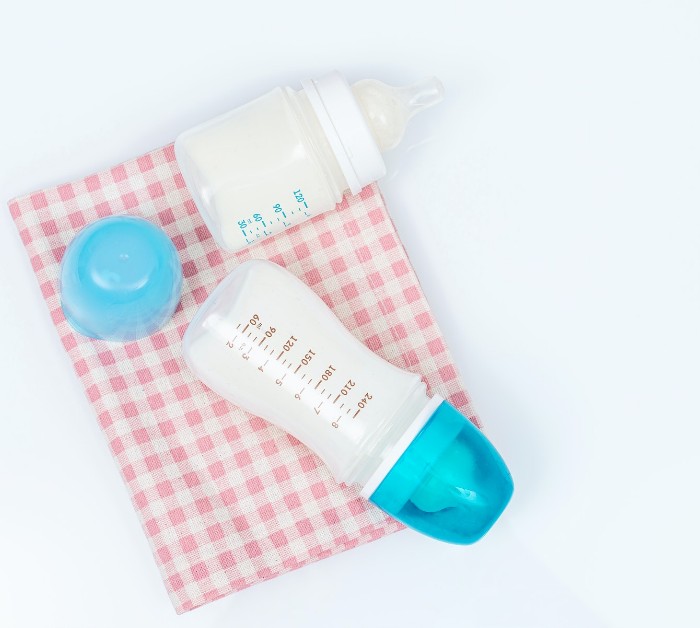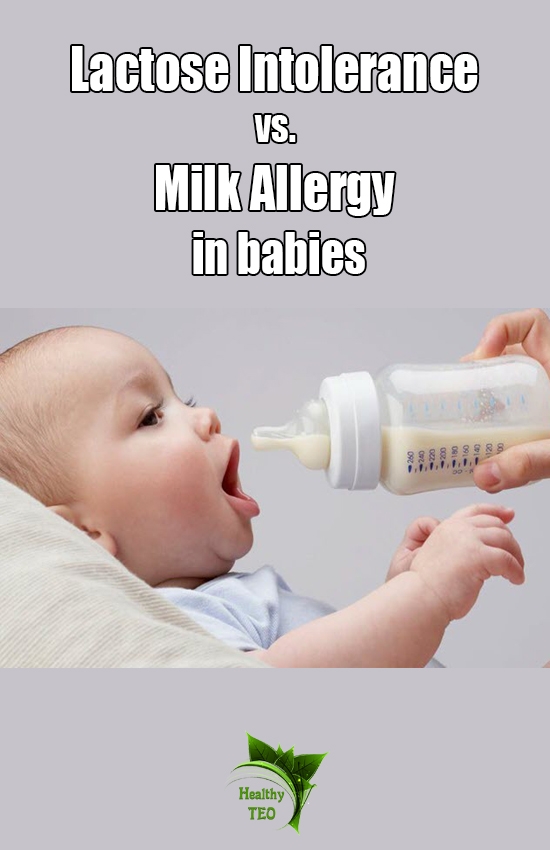Lactose intolerance and milk allergy can have similar symptoms, read how to make difference between them! Milk and babies go together, as a parent you are very happy when your baby drinks the whole bottle of milk. Happy babies, happy parents.
But what happens when tummy troubles strike. You ask yourself then what is the problem, what am I doing wrong? Is this too much milk that I gave him or …
If your baby shows symptoms like tummy pain, gas, or a rash after having milk, you might be wondering what is going on?
Lactose intolerance and milk allergy can cause tummy troubles in infants, read below how to make a difference between these two conditions.
Lactose Intolerance
Lactose intolerance or sensitivity is a condition where the body can’t digest sugar (lactose) which is present in milk and dairy products.
Lactase is an enzyme responsible for breaking down lactose sugar. This digestive problem is not so common among infants and typically starts to develop after the age of 3.
If it is a genetic condition known as congenital lactase deficiency, the infants should be feed with infant formula that is lactose-free. But this condition is very rare.
Because the enzyme (lactase) is produced in the small intestine damage to the gut may decrease the production of this enzyme and temporarily cause lactose intolerance. But this tends to go away for a week or a few days after the gut heals.
Lactose intolerance symptoms
They may vary depending on the amount of lactose that the child has consumed.
The most common symptoms include diarrhea, gas and bloating, vomiting, abdominal pain, and rumbling sounds in the stomach.
Lactose intolerance can be very uncomfortable for your baby, but it is otherwise harmless. On the other hand, milk allergy can be very dangerous and can cause some additional symptoms.
Milk Allergy
A food allergy or milk allergy is an immune reaction to the protein in milk. Cow’s milk allergy is a very common condition among babies under the age of 1.
Cow’s milk allergy can manifest immediately after consuming cow’s milk and you will see symptoms of an allergic reaction within minutes. In some cases, this reaction can be delayed for a few hours or days after milk is consumed.
Cow’s milk allergy can cause symptoms
Like an itchy red rash or swelling in the face, lips, or around the eyes.Blocked or runny nose, eczema, stomach problems like vomiting, colic, constipation, diarrhea.
It is important to know that if your baby has swelling in the throat or mouth, short breath, or noisy breathing, immediately get medical help.
To stay safe, milk-allergic infants need to completely avoid all foods with milk-containing ingredients.
Cow’s milk allergy is not uncommon among babies but most of them tend to outgrow it by the time they are 5 years old.
For a baby with this condition, you will have to remove cow’s milk from the baby’s diet and this means that it can’t consume sheep or goat milk too.
You will have to use a formula that contains cow’s milk with breast milk, hydrolyzed formula, soy formula, or amino acid formula. Which formula to use you will consult with your doctor.
Conclusion: Lactose intolerance causes only tummy troubles and may develop as a child grows. Milk allergy causes rashes and breathing difficulties, babies outgrow milk allergy after the age of 5.
*Note: This article is only for informational purposes and should not be considered as medical advice!





